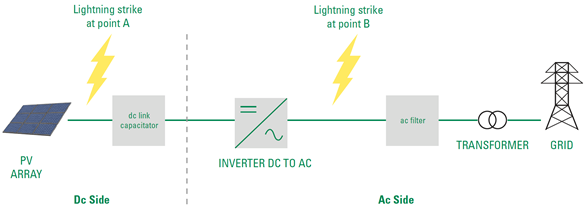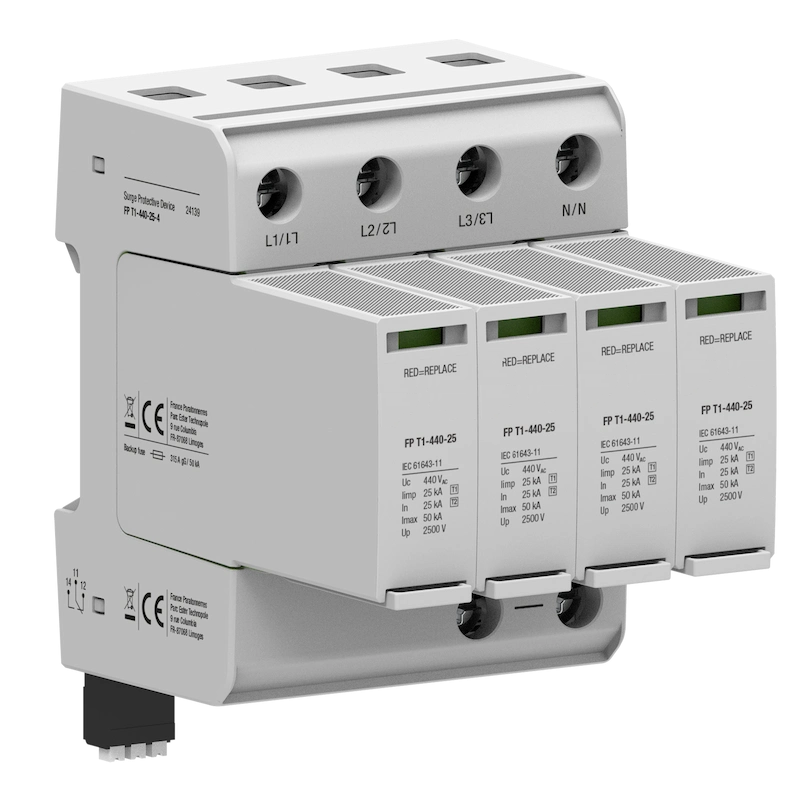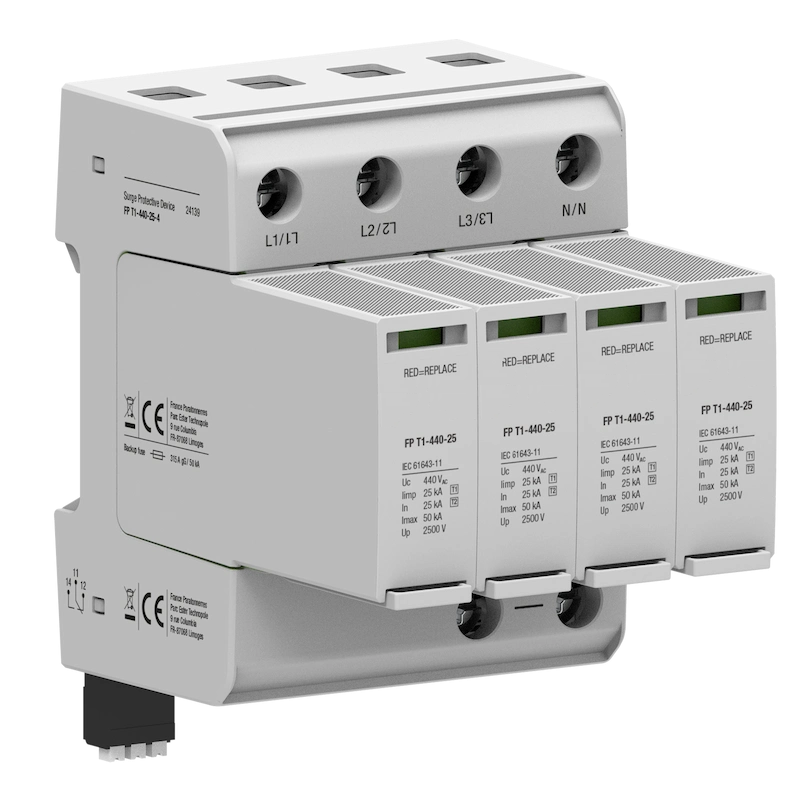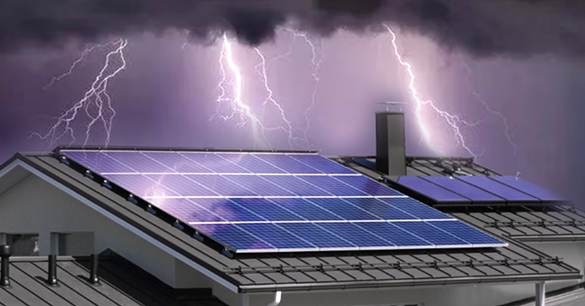Selection of Correct/ Right SPD?
Surger Protection Devices
Do you worry that your expensive solar PV system could one day be easily damaged?
However, the reality is without surge protection, even the slightest voltage spike can damage every electronic device that draws power from the solar panel array. Additional to that, without lightning protection, any investment you make in energy efficiency will be useless, as lightning is one of the leading causes of solar panel failure.
The ultimate guide to purchasing an SPD for your solar PV system is what we’ll be looking at today. Let’s start now.
Why Do Solar Power/PV Systems Need Surge Protection?
As you know, solar panels are installed outdoors. It makes them directly exposed to harsh conditions like rain, wind, and dust. Among the weather conditions, lightning strikes require specific attention as they can severely affect the safety and performance of a PV system.
When the lightning strike hits the ground, it discharges energy, affecting the electrical field on the ground. For the solar PV plant, this poses two risks:
A direct impact that can physically destroy the solar equipment on a rooftop
Transitory overvoltages passing through cables by magnetic coupling, which can lead to the damage of sensitive components such as printed circuit boards (PCB).
Unprotected PV systems will sustain repeated and significant damage in areas where lightning strikes frequently. This can result in a significant repair and replacement costs, system downtime, and revenue loss.
Solar surge protection(SPD) is designed to limit the transient overvoltages and divert the waves of current to the earth. Additionally, it restricts the overvoltage’s amplitude to a value that is safe for the electrical infrastructure and switchgear.
How Many Solar Surge Protection Devices Are Required in a Solar/PV System?

When lightning strikes point A(Figure 1), the solar PV panel and the inverter are likely to be damaged. A lightning strike at point B will only damage the inverters. Therefore, both the AC and DC lines require the suitable SPD to be properly chosen and installed.
The number of SPDs installed in a solar PV system varies depending on the distance between the panel and the inverter.
When the cable length between solar panels is under 10 meters: 1 SPD should be installed by the inverter, combiner boxes, or closer to the solar panels.
When DC cabling is over 10 meters: more surge protectors are required at both the inverter and solar modules end of the cables.
How Does an SPD Work to Protect the Solar PV System?

In the simplest terms, a solar SPD controls the transient voltage and directs the current back to its source or ground when a transient voltage arises on the protected circuit.
To ensure that energy flows to the ground first to prevent overvoltages, the most important component is the Metal Oxide Varistor (MOV). which under different conditions transitions between a high and low impedance state.
The solar surge protection device is in a high-impedance state and has no impact on the solar PV system at typical operating voltages. When a transient voltage occurs on the circuit, the SPD moves into a state of conduction (or low impedance) and diverts the surge current back to its source or ground. This limits or clamps the voltage to a safer level. After the transient is diverted, the SPD automatically resets back to its high-impedance state.
Choosing the right SPD for Solar Applications



